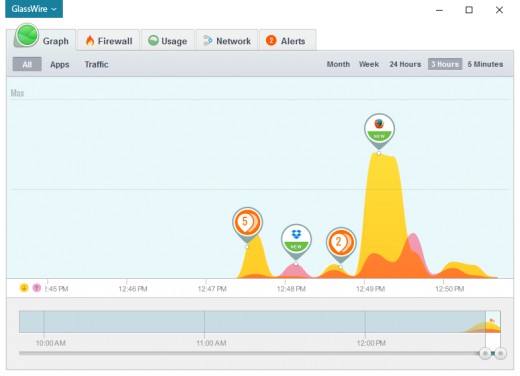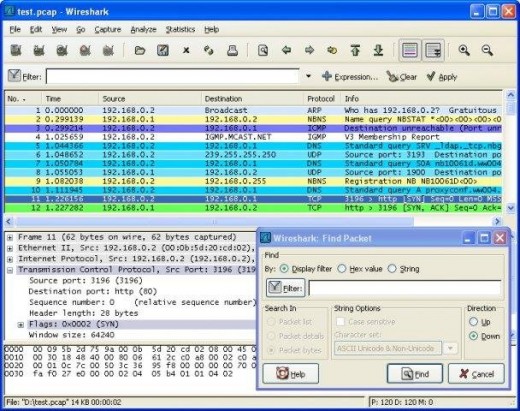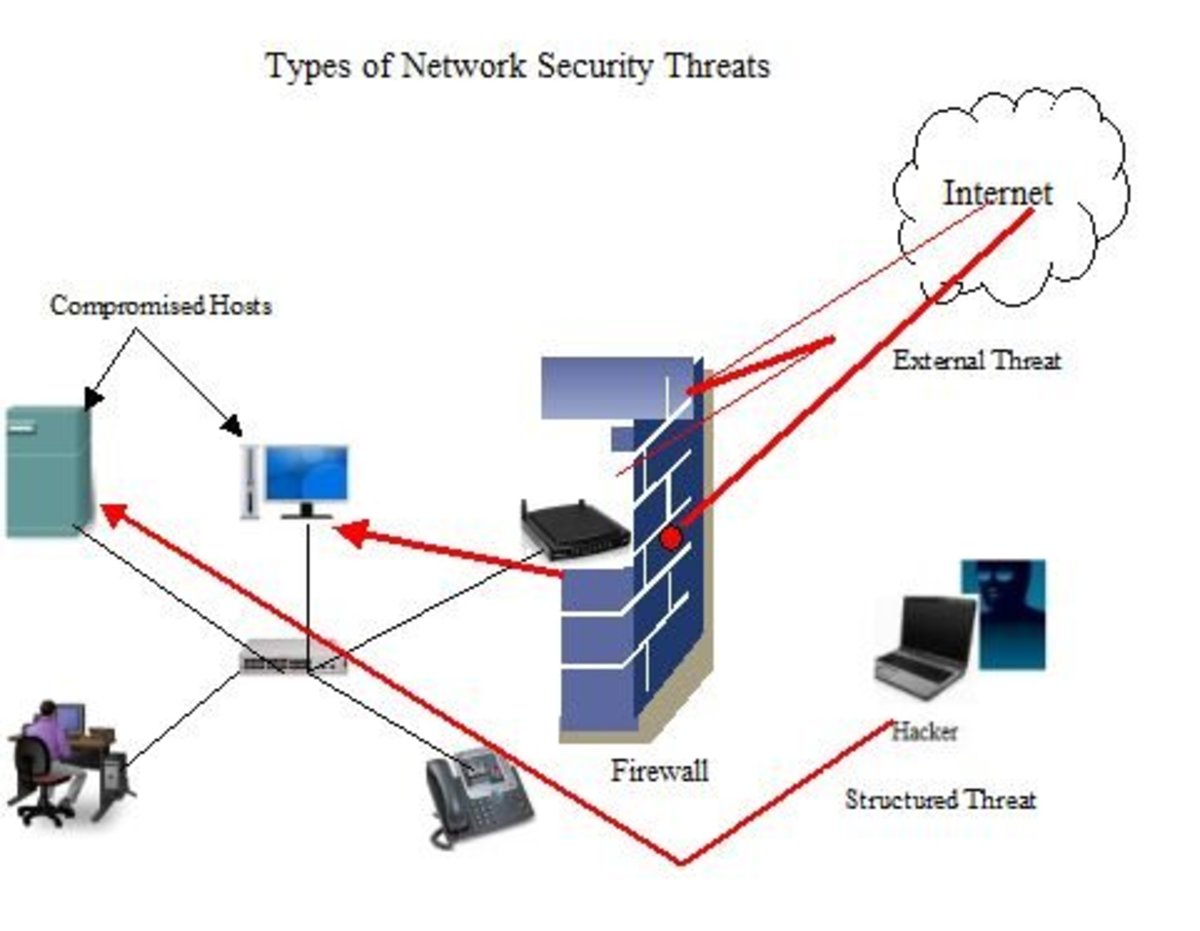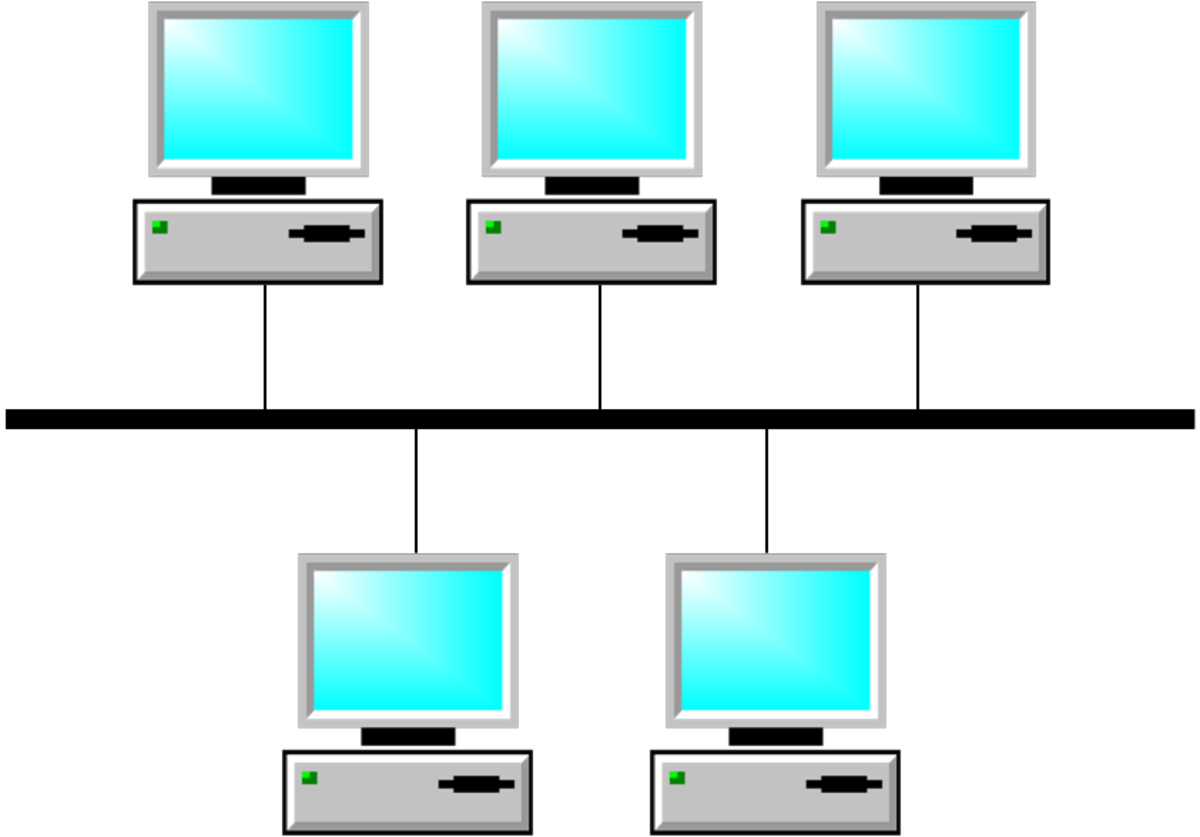Protecting your computer by monitoring your network activity
Why would I want to monitor my network activity?
There are many different reasons to monitor your network activity. For example some people have data caps with their Internet service provider and others may want to simply keep tabs on what their PC is doing in the background.
For myself, I wanted to easily see what my PC was doing over the network to help protect myself from malware. After a lot of trial and error I found two tools that helped me monitor my network activity over the full network, and for just my PC.
GlassWire Network Security Monitor & Firewall

Using GlassWire's Network Security Monitor
The first software I found is a network visualization software called GlassWire. GlassWire makes it very easy to see what your PC is doing over the network. Once you launch the application a graph appears and shows you how much data your PC is using.
You can then click the graph to see what applications and hosts are using your data. If you find that an unknown application is using your bandwidth you can go to GlassWire's "Firewall" tab and block that app from accessing the network.
GlassWire also has an "Ask to connect" mode where it asks you for every connection before you allow or deny it. Whenever a new application accesses the network GlassWire will ask if you'd like that application to access the network and you can then click yes or no.
Another useful feature I enjoyed with GlassWire was the ability to see what apps and servers were using my data every month. Go to GlassWire's "Usage" tab to see what apps are using your data (in order of usage), then you can also break down this information by day, month, and year.
If you have limits on data by your ISP you can go to GlassWire's settings and set a bandwidth overage alert. GlassWire's bandwidth overage alert tells you when you're closed to hitting your daily or monthly bandwidth limit. One of my family members lives in a rural area and is only able to get Satellite Internet access. He uses GlassWire to keep tabs on his network activity so he doesn't go over the very low data limits that go with using Satellite Internet.
I recommend GlassWire to help you easily understand the network activity of your computer. GlassWire is great for monitoring a PC, or a group of remote PCs but GlassWire doesn't monitor your entire network. If you want to monitor your entire network I recommend checking out Wireshark.
GlassWire Video Review
Wireshark

Monitoring your network with Wireshark
After using GlassWire I wanted to find a way to see what was happening on my entire network and not just my PC. I spent a lot of time testing different applications but I kept coming back to Wireshark.
Wireshark is a free open source software that helps you see what's happening on the full network, and not just your single computer. I found that Wireshark was very powerful software, but it had a bit of a learning curve.
I spent a lot of time watching Youtube tutorials, then after some trial and error I was able to see all the devices on my network and see what data they were sending in and out over the Internet.
Wireshark monitors your network activity by showing you details about the packets that are moving around on your network. Packets are a unit of data that is routed between an origin and a destination on the Internet.
After installing Wireshark, start it and click the name of an interface under its "Interface List" to start capturing packets on that interface.
For example, if you want to capture traffic on the WiFi network, click your wireless interface. Packets then start to appear inside Wireshark's window. You can click the red stop sign to stop the packet monitoring any time.
From these packets you're able to tell what remote servers your computers and devices are communicating with. It actually took me quite a bit of time to learn about and understand Wireshark and I posted the most useful video I found online below.
Getting started with Wireshark
Network Software Poll
What is your favorite network monitoring software?
How do you monitor your network activity?
Do you monitor your network activity on your PC, Mac, or mobile devices? I'd be interested to hear what software and tools you use below.
Thanks for reading and happy computing!






